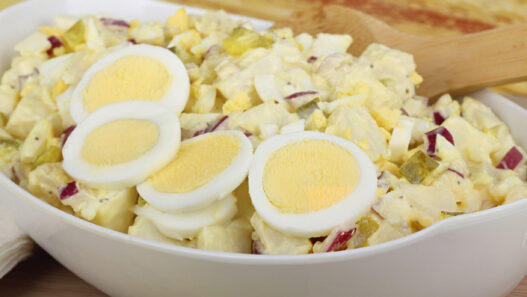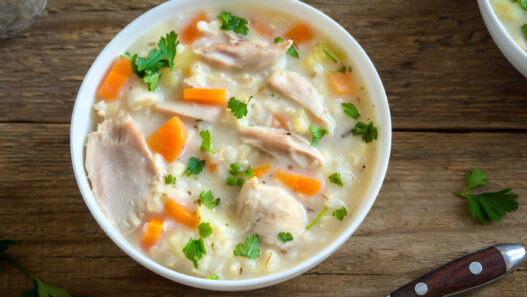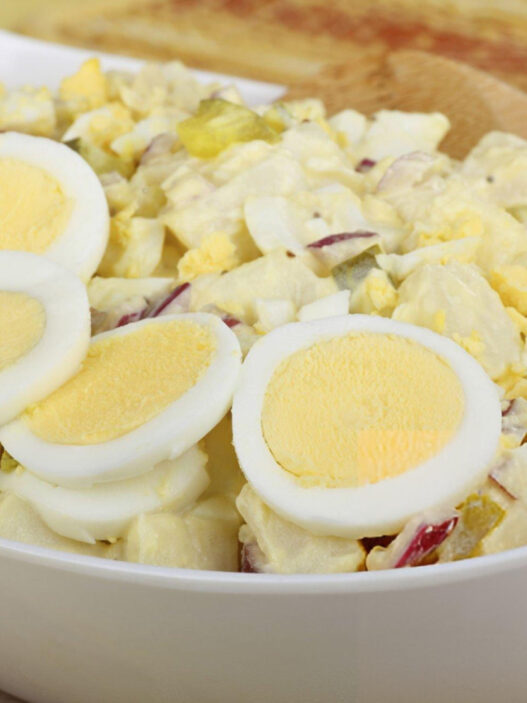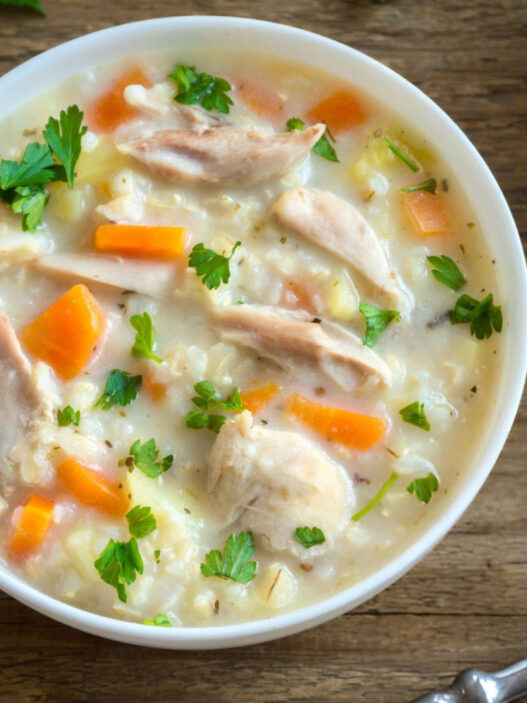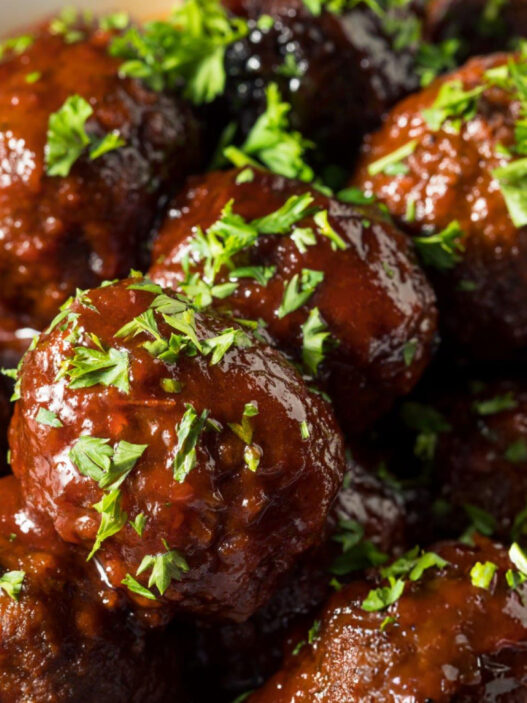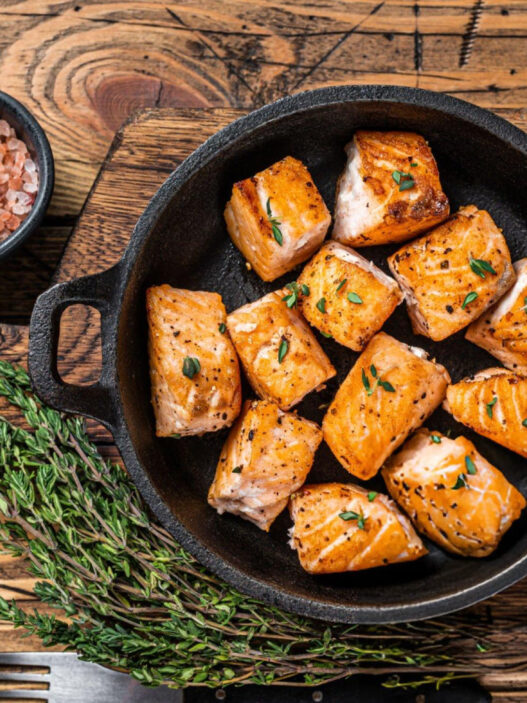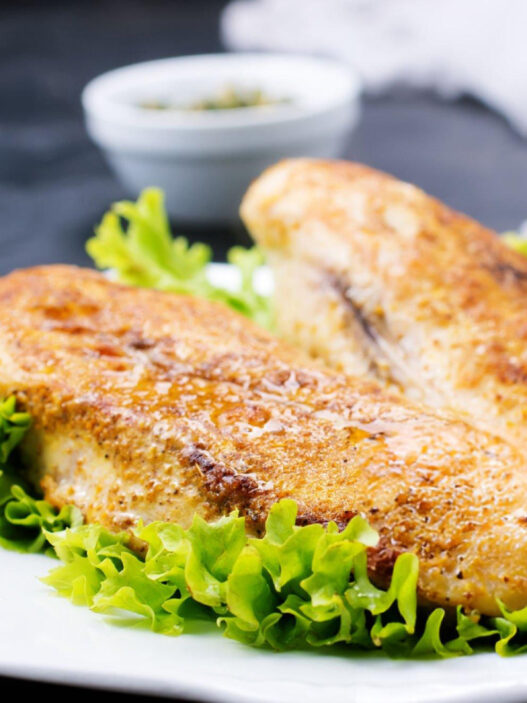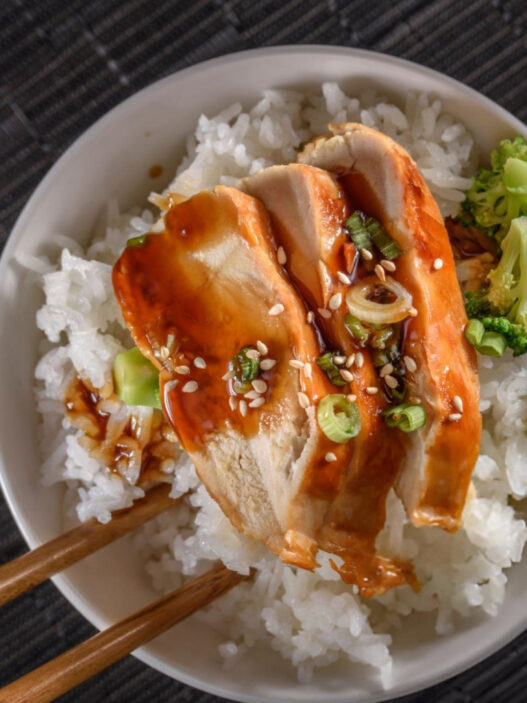A velvety, rich sauce that brings a perfect balance of citrusy brightness and buttery smoothness. This versatile sauce is ideal for draping over seafood, poultry, and vegetables, creating a luxurious, restaurant-quality finish. Whether enhancing an elegant meal or adding a gourmet touch to everyday dishes, lemon butter sauce is simple yet refined, making it a kitchen essential.

Ingredient Breakdown
Key Flavor Components
Dry sherry, clam juice (or chicken stock), and lemon juice work in harmony to create depth and complexity. The dry sherry adds a subtle sweetness and enhances the richness, while the clam juice provides a delicate oceanic essence. Lemon juice ties everything together with a refreshing acidity that cuts through the richness of the butter.
Dairy and Butter
Whole milk (or a combination of cream and water) contributes to the sauce’s creamy consistency, ensuring a smooth mouthfeel. Butter is the heart of this sauce, giving it a luxurious texture and a rich, velvety finish that coats every bite beautifully.
Aromatic Elements
Minced shallots, garlic, and a bay leaf lend a subtle yet essential depth of flavor. Shallots provide a mild sweetness, garlic adds warmth, and the bay leaf infuses an earthy note that rounds out the overall profile of the sauce.
Seasonings
A touch of salt and white pepper brings balance to the sauce. White pepper offers a gentle heat without overpowering the delicate flavors, while salt enhances the natural sweetness and umami of the ingredients.
Step-by-Step Preparation Guide
Reducing the Liquids
Simmering the base ingredients—clam juice, dry sherry, milk, shallots, garlic, and bay leaf—helps intensify the flavors. As the liquid reduces by half, the flavors become more concentrated, resulting in a sauce with a deeper, more complex taste. A gentle simmer is key to preventing any bitter notes from developing.
Preparing the Roux
A well-made roux is crucial for thickening the sauce to a smooth, luxurious consistency. Melting a small amount of butter until foamy and whisking in the flour ensures an evenly thickened base. Stirring continuously prevents clumping and allows the roux to develop a light golden hue without browning.
Incorporating the Reduced Liquid
Adding the reduced liquid gradually while whisking ensures a perfectly smooth texture. Slowly incorporating the liquid prevents the roux from seizing or forming lumps. Whisking vigorously allows for seamless integration, creating a cohesive sauce with just the right level of thickness.
Blending in the Butter
To achieve the signature silkiness of lemon butter sauce, the butter must be added in small increments. Keeping the heat low prevents separation, and whisking continuously allows each addition of butter to emulsify fully before adding the next. The gradual addition ensures the sauce remains glossy and stable.
Finishing Touches
Once the butter is fully incorporated, a final touch of lemon juice, salt, and white pepper completes the sauce. The acidity of the lemon juice brightens the flavors, while seasoning adjustments ensure a balanced taste. If the sauce thickens too much, a splash of clam juice or water can be added to adjust the consistency to your preference.
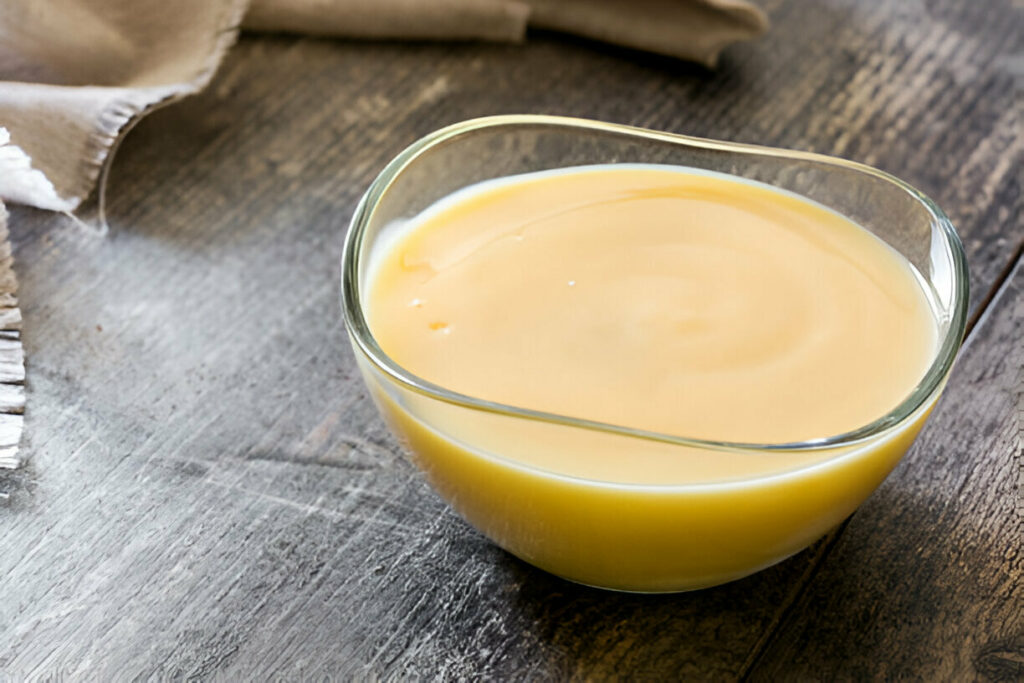
Recipe Tips & Frequently Asked Questions
The best type of butter to use for a well-emulsified sauce:
High-quality unsalted butter is ideal for achieving a smooth, creamy consistency.
How to prevent the sauce from breaking or curdling:
Keeping the heat low while adding butter ensures a stable emulsion. Whisking constantly prevents separation.
Adjusting flavors to complement different proteins and vegetables:
Increase lemon juice for a more citrusy finish, or add a pinch of cayenne for subtle heat.
Storage and reheating techniques to maintain texture:
Store in an airtight container in the refrigerator and reheat gently over low heat, whisking continuously.
Can I substitute chicken stock for clam juice without altering the flavor too much?
Yes, chicken stock works well, though clam juice adds an extra layer of depth, especially for seafood pairings.
How do I prevent the sauce from becoming too thick or too thin?
Adjust by adding small amounts of water or broth as needed.
What is the best way to reheat leftovers without separating the butter?
Heat over very low heat, stirring constantly to re-emulsify the butter.
Can I make this sauce ahead of time for meal prepping?
Yes, but reheating should be done carefully to maintain the sauce’s smooth consistency.
What to Serve With This Recipe
Seafood Pairings
Lemon butter sauce pairs exquisitely with seafood, enhancing the delicate flavors of dishes like seared scallops, grilled salmon, or pan-fried shrimp. The acidity cuts through the richness of the seafood, creating a beautifully balanced bite.
Poultry and Meat Options
This sauce complements light meats like chicken or turkey, adding a silky, flavorful coating. Drizzle over roasted or grilled chicken breasts for a gourmet touch.
Vegetable Combinations
For a vegetarian option, use lemon butter sauce as a finishing touch over steamed asparagus, roasted Brussels sprouts, or sautéed mushrooms. The richness of the sauce highlights the natural sweetness of the vegetables.
Side Dishes
Serve with rice, pasta, or a crusty baguette to soak up every last drop of this velvety sauce. The creamy texture melds beautifully with starchy sides, creating a complete and satisfying meal.
Lemon butter sauce is a game-changer in the kitchen, bringing an elegant yet effortless touch to any dish. Its balanced blend of citrus, cream, and butter makes it a versatile addition to seafood, poultry, vegetables, and more. With simple techniques and a few high-quality ingredients, this sauce transforms ordinary meals into something extraordinary. Experiment with variations to suit your taste and enjoy the depth of flavor that this classic sauce brings to your table.
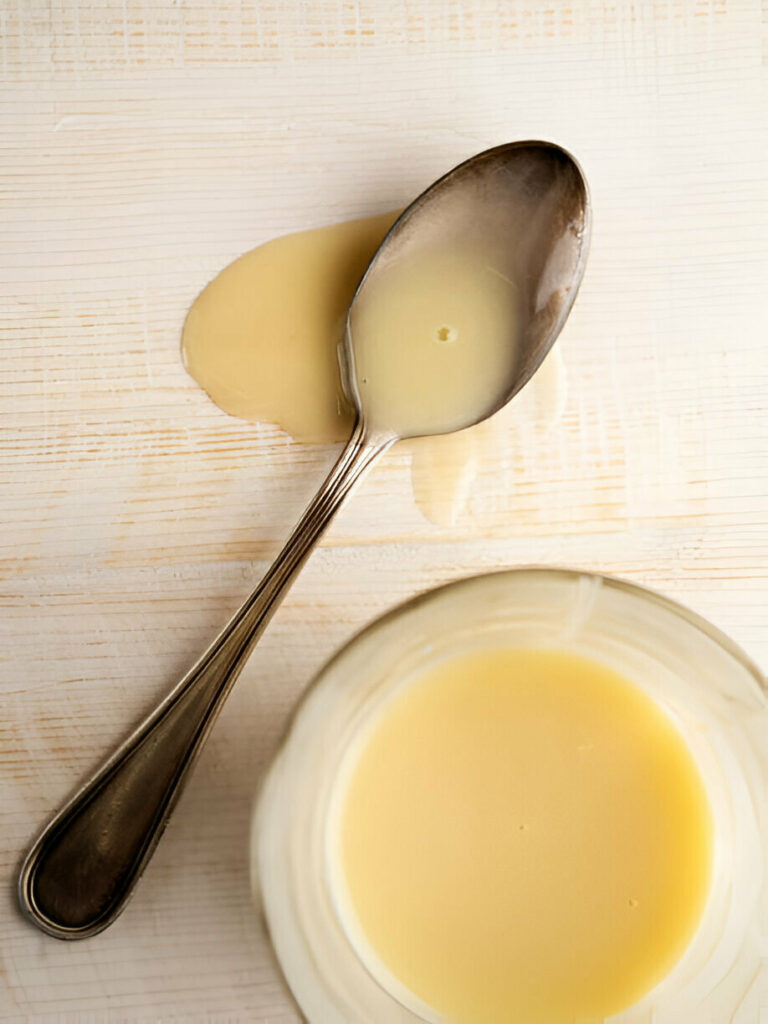
Ingredients
1/2 cup dry sherry
1/2 cup clam juice (or substitute with chicken stock)
1/2 cup whole milk (or mix 3 tablespoons cream with 5 tablespoons water)
1 tablespoon minced shallots
1 tablespoon minced garlic
1 bay leaf
1/2 teaspoon salt
1/2 teaspoon white pepper
1/2 pound (2 sticks) unsalted butter
1 tablespoon all-purpose flour
1 tablespoon lemon juice
1 tablespoon unsalted butter
Instructions
In a small saucepan, combine the clam juice, dry sherry, whole milk, minced shallots, minced garlic, and bay leaf. Set over medium-high heat and bring to a gentle simmer. Allow the liquid to reduce by half, concentrating its flavors into a rich and aromatic base.
In a separate saucepan (at least 1-quart capacity), melt one tablespoon of unsalted butter over medium heat until it becomes foamy. Sprinkle in the flour while continuously whisking to create a smooth, lump-free mixture. Stir for a couple of minutes until the roux takes on a light tan color, ensuring it does not brown.
Gradually pour the reduced liquid into the roux, whisking vigorously to combine. Expect the mixture to bubble up initially—continue whisking steadily to achieve a smooth consistency as the sauce thickens.
Lower the heat to its lowest setting and remove the bay leaf. Begin adding the unsalted butter, two tablespoons at a time, whisking continuously to ensure each portion fully melts and emulsifies into the sauce before adding the next.
Once all the butter is incorporated, stir in the lemon juice, salt, and white pepper. If the sauce appears too thick, adjust the consistency by adding a small amount of clam juice or water. Serve warm, draped over seafood, vegetables, or poultry for a luxurious finishing touch.
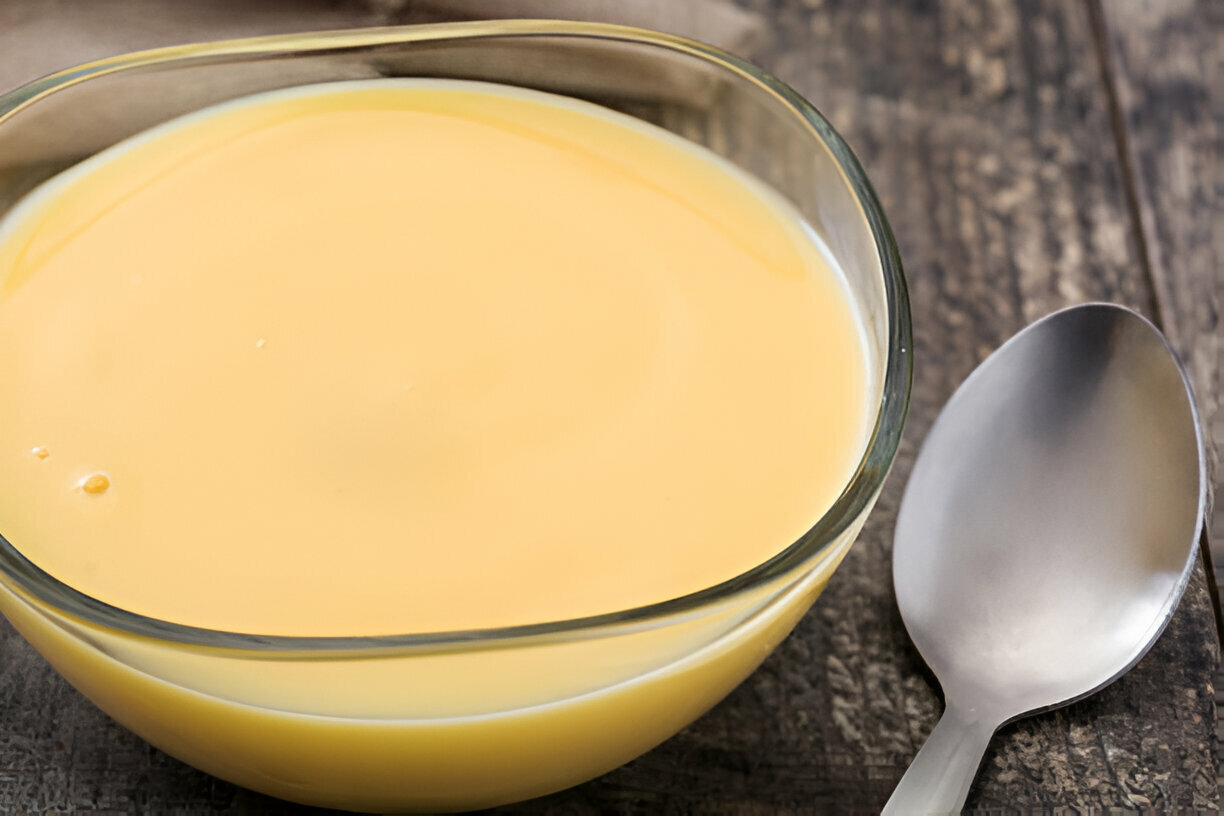
Lemon Butter Sauce Recipe
Ingredients
- 1/2 cup dry sherry
- 1/2 cup clam juice or substitute with chicken stock
- 1/2 cup whole milk or mix 3 tablespoons cream with 5 tablespoons water
- 1 tablespoon minced shallots
- 1 tablespoon minced garlic
- 1 bay leaf
- 1/2 teaspoon salt
- 1/2 teaspoon white pepper
- 1/2 pound 2 sticks unsalted butter
- 1 tablespoon all-purpose flour
- 1 tablespoon lemon juice
- 1 tablespoon unsalted butter
Instructions
- In a small saucepan, combine the clam juice, dry sherry, whole milk, minced shallots, minced garlic, and bay leaf. Set over medium-high heat and bring to a gentle simmer. Allow the liquid to reduce by half, concentrating its flavors into a rich and aromatic base.
- In a separate saucepan (at least 1-quart capacity), melt one tablespoon of unsalted butter over medium heat until it becomes foamy. Sprinkle in the flour while continuously whisking to create a smooth, lump-free mixture. Stir for a couple of minutes until the roux takes on a light tan color, ensuring it does not brown.
- Gradually pour the reduced liquid into the roux, whisking vigorously to combine. Expect the mixture to bubble up initially—continue whisking steadily to achieve a smooth consistency as the sauce thickens.
- Lower the heat to its lowest setting and remove the bay leaf. Begin adding the unsalted butter, two tablespoons at a time, whisking continuously to ensure each portion fully melts and emulsifies into the sauce before adding the next.
- Once all the butter is incorporated, stir in the lemon juice, salt, and white pepper. If the sauce appears too thick, adjust the consistency by adding a small amount of clam juice or water. Serve warm, draped over seafood, vegetables, or poultry for a luxurious finishing touch.

